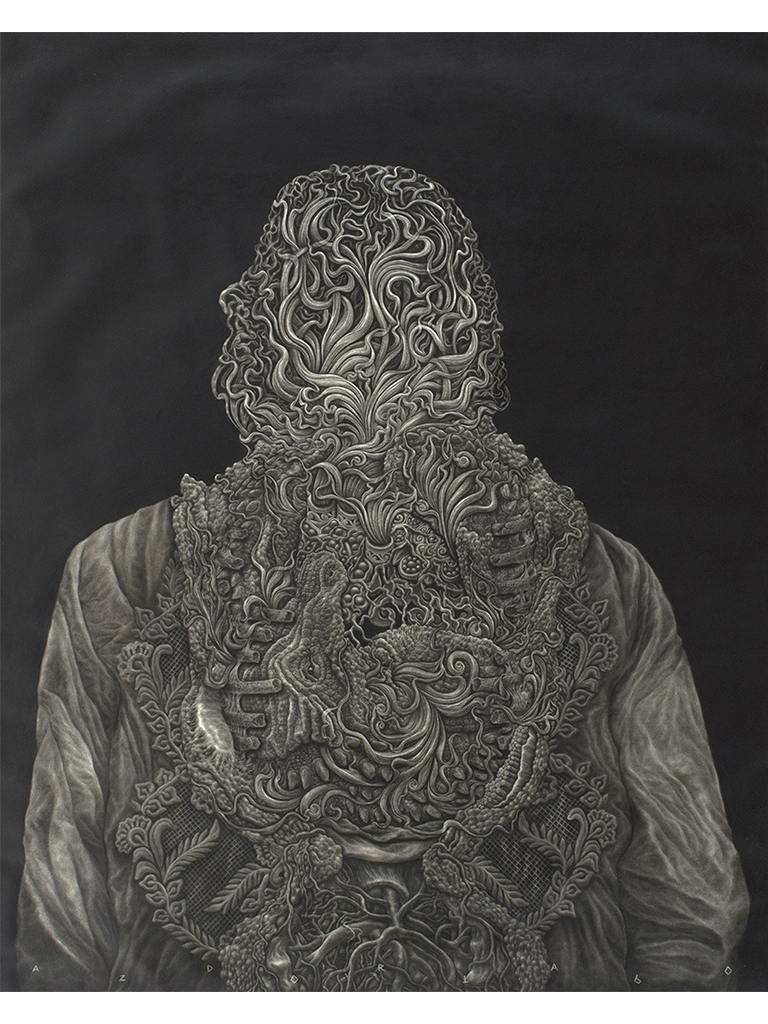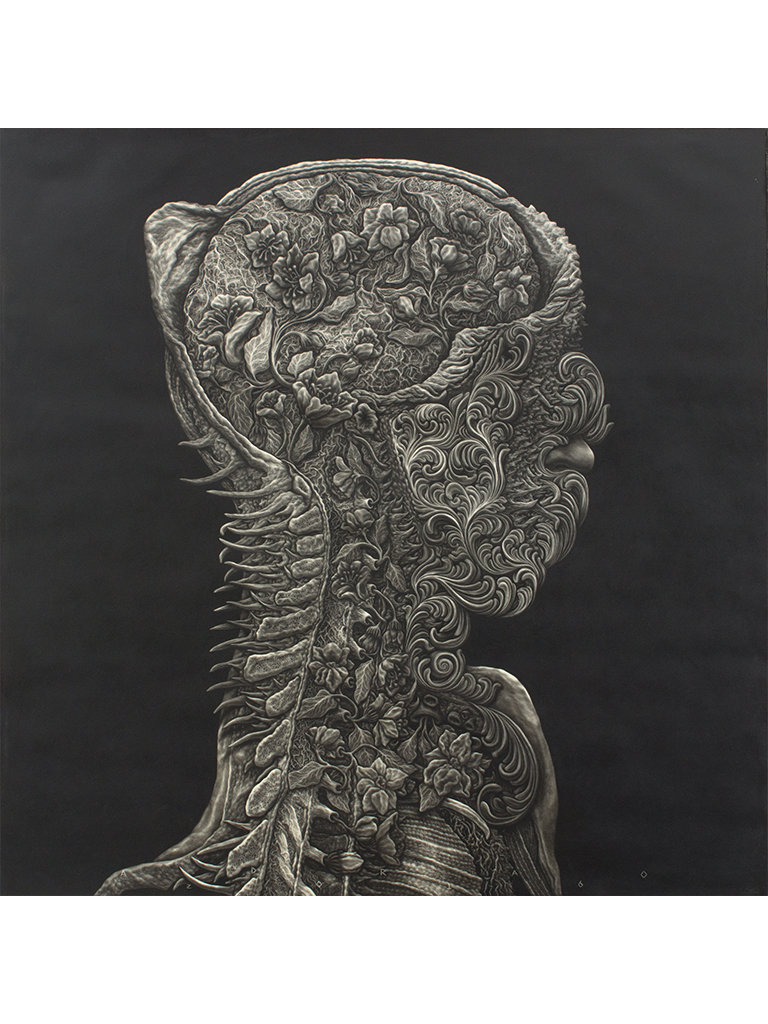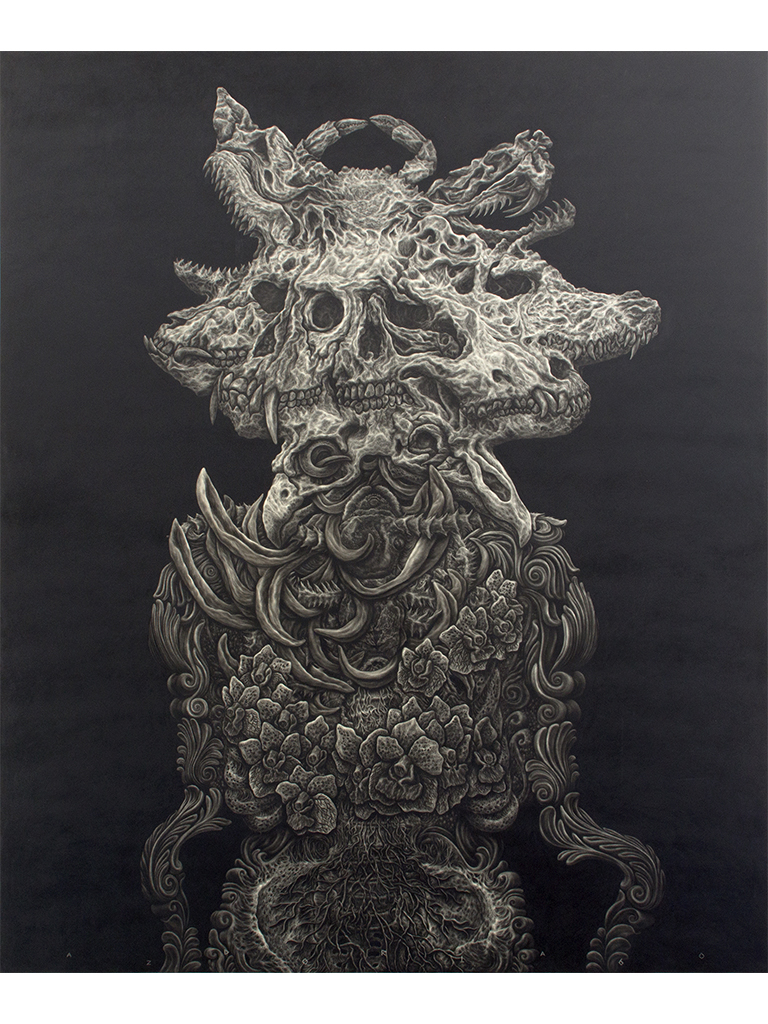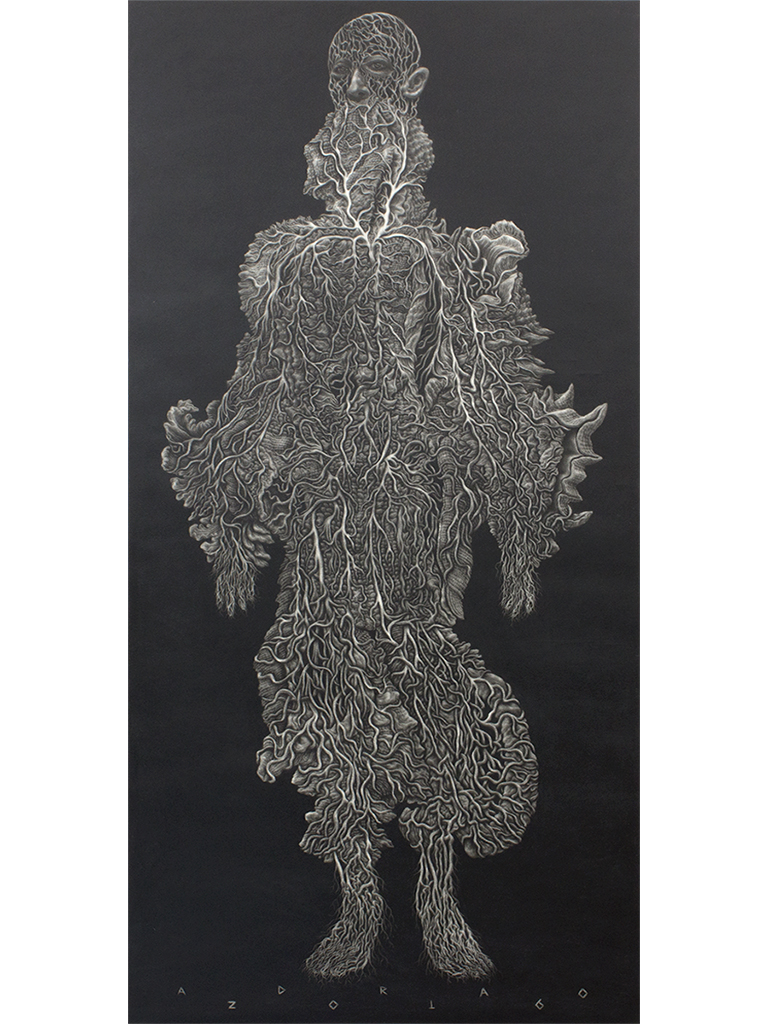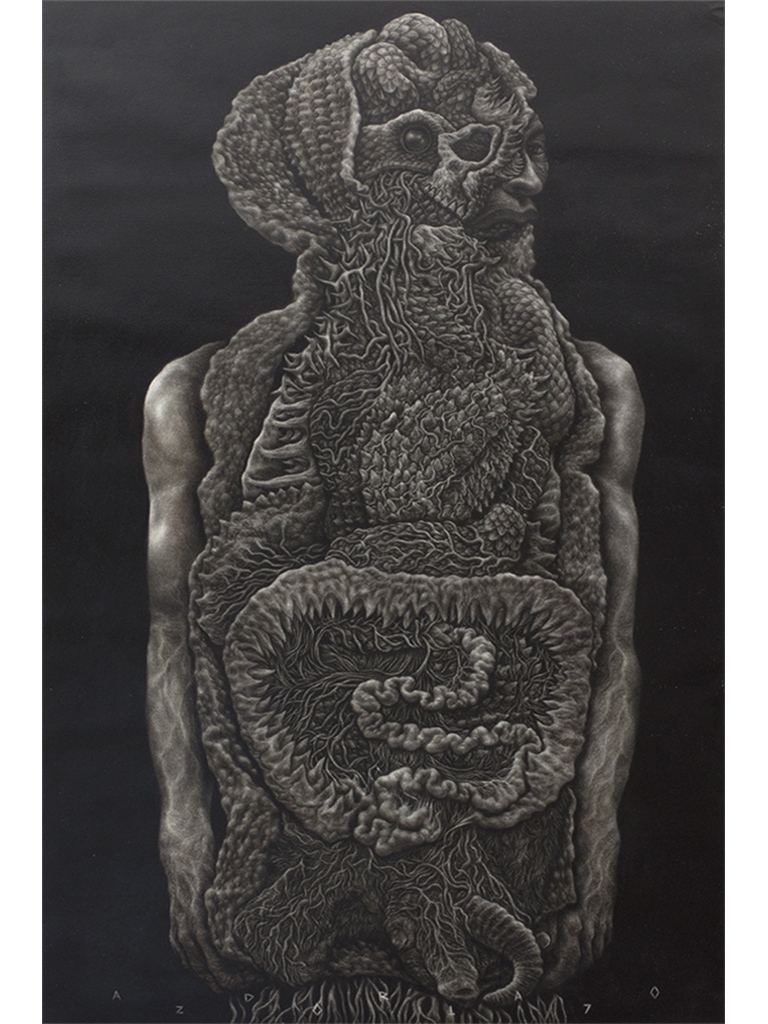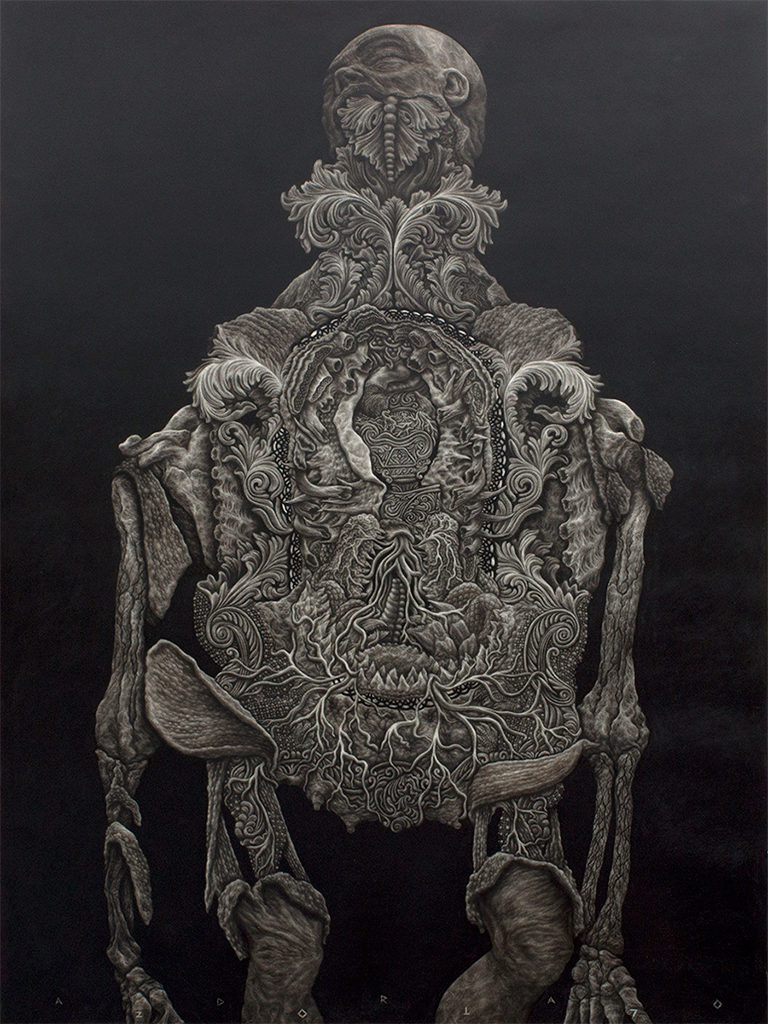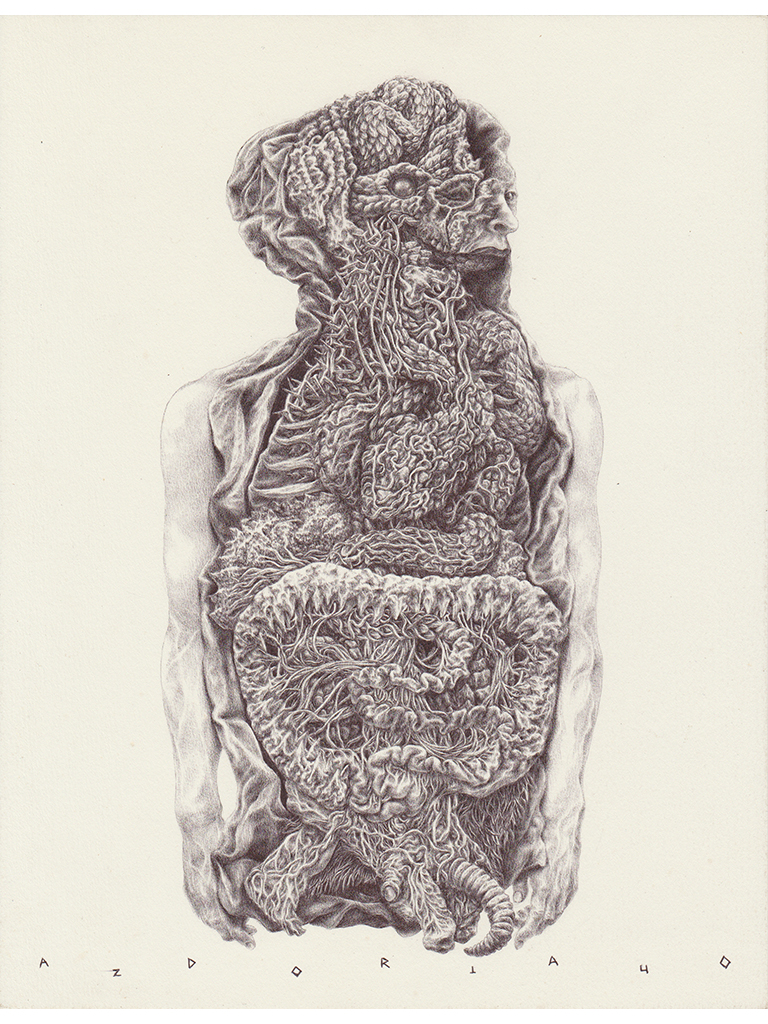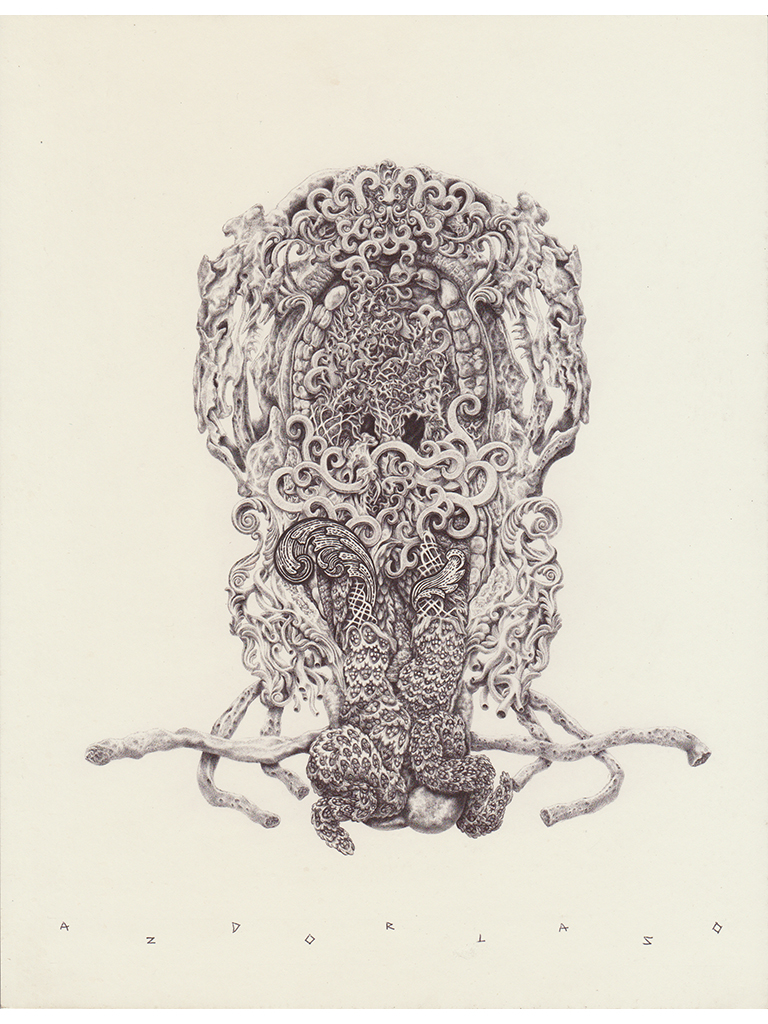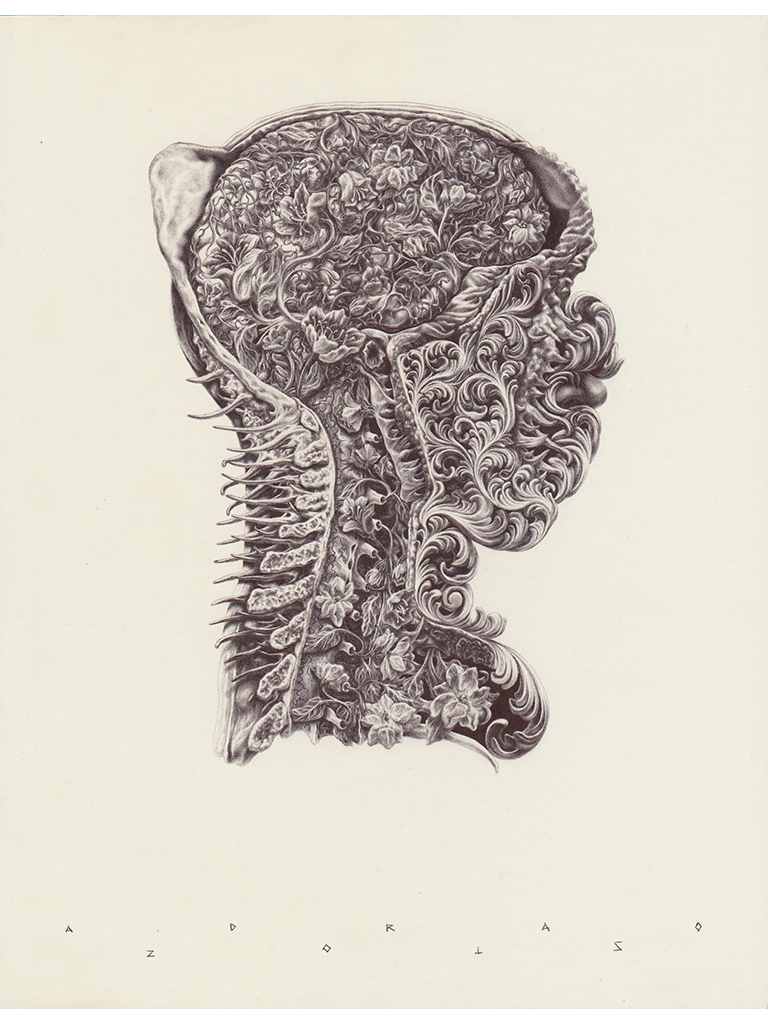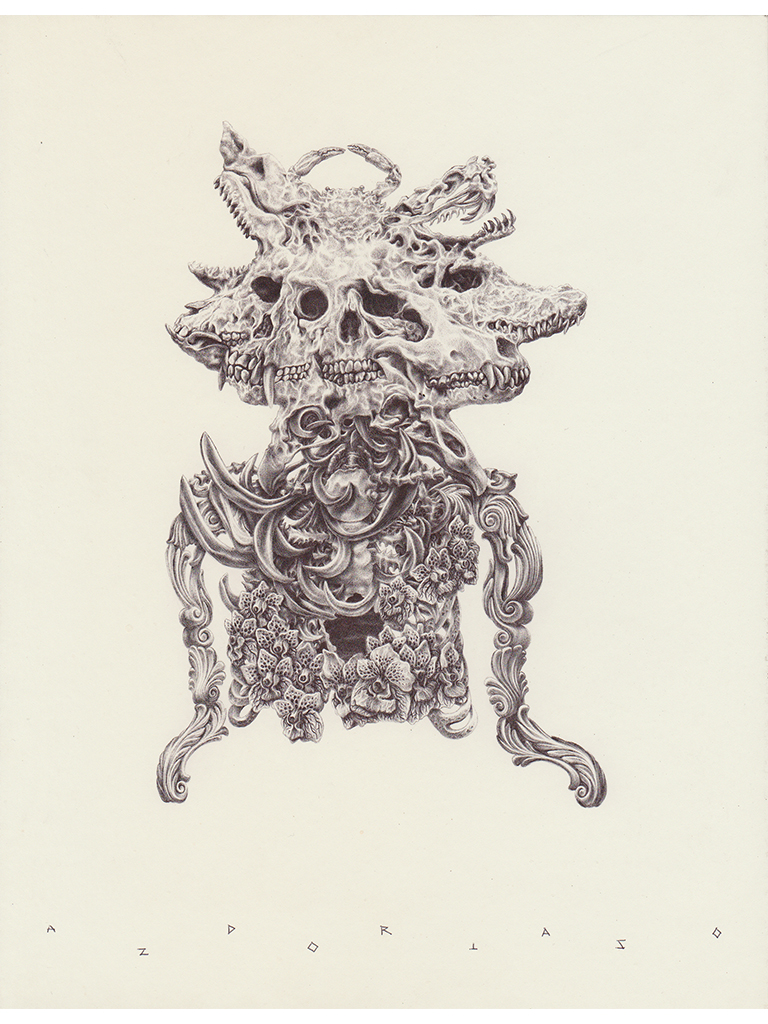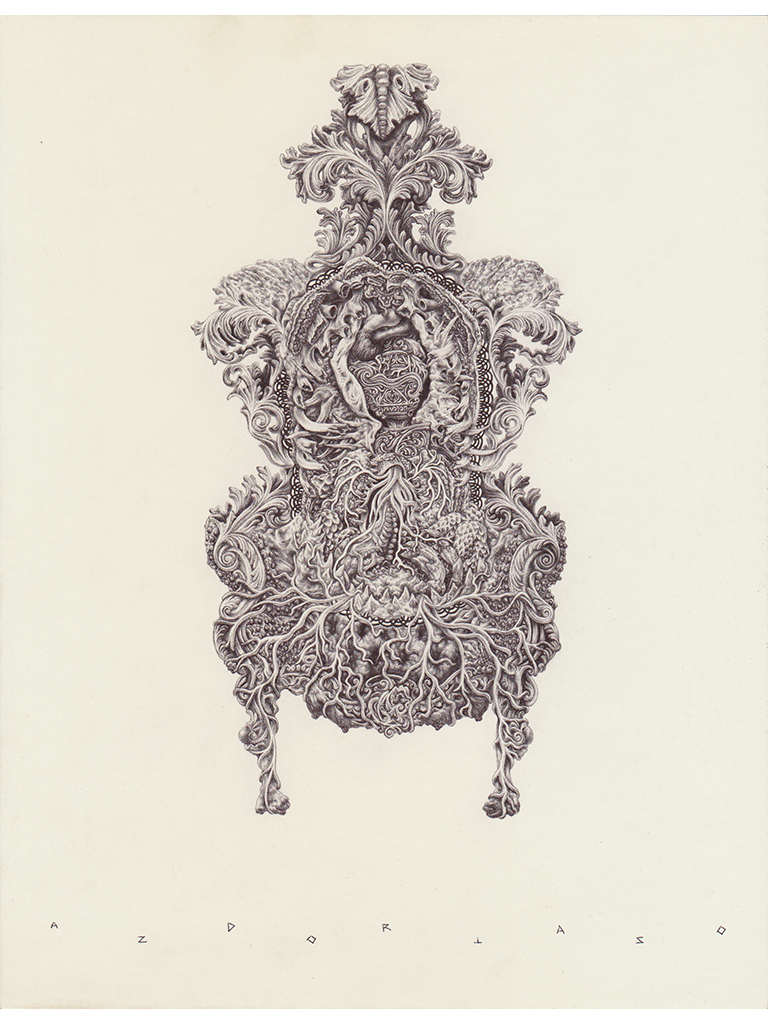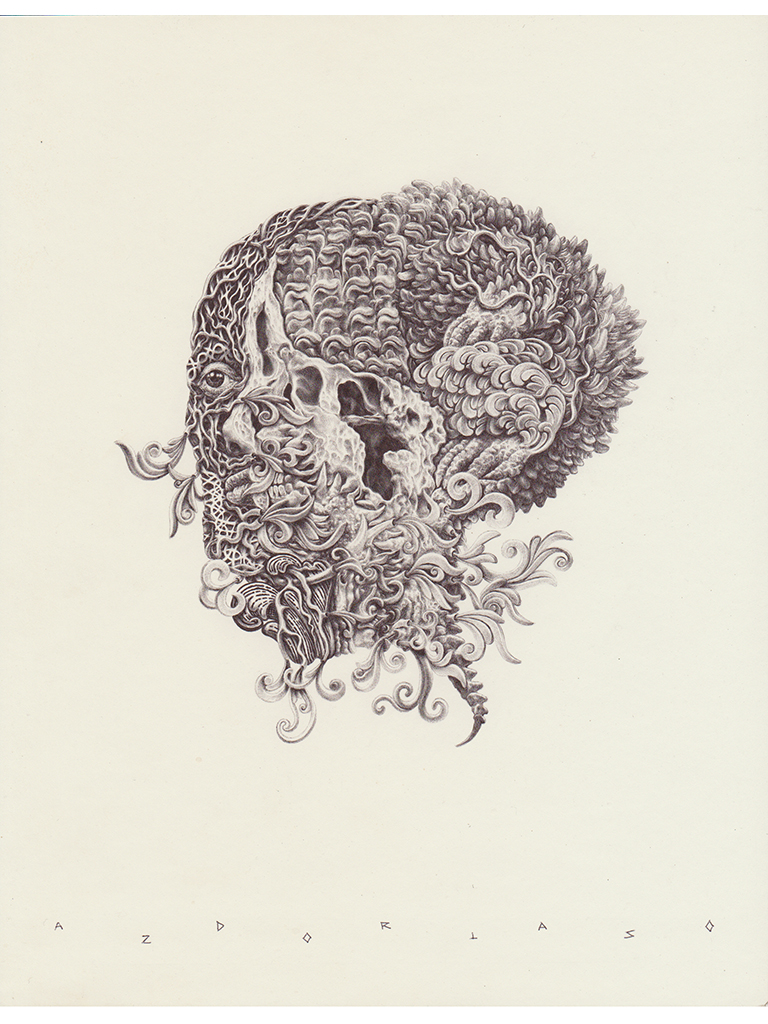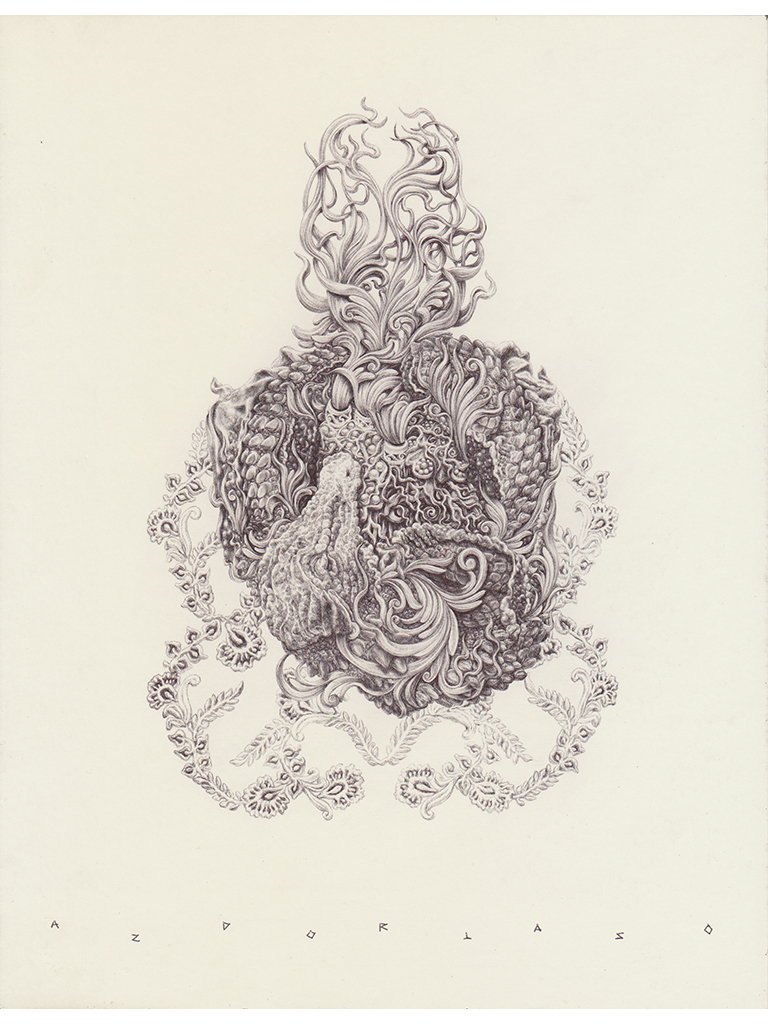Malady
11 Mar - 01 Apr 2017
Mike Adrao
Against a dark backdrop whose gentle folds and smooth creases help evoke a flag undulating at a glacial place or a cloth hastily laid out on a flat surface, stand human figures whose faces, limbs, and torsos inexplicably morph into heterogeneous topographies of bone, fur, shell, stone, and minerals. The vertical stratification of skin is made obsolete; dense thickets and ossified formations of various elements clash, fuse, and intertwine to constitute the human body, its inner recesses remain uncharted.
In Malady, Mike Adrao’s fourth solo exhibition, these grotesque apparitions are rendered primarily using charcoal. This further lends a haunting quality to the depiction of humans in viscerally jarring states; figures mangled and marred by animal skulls, voluminous thorns, dendrites, anemone, cobwebs, tendrils, foam, oceanic waves, geologic structures, reptilian skin, spores, roots, and branches.
These bodies, colonized by labyrinthine networks and calcified clusters, circumscribed merely by human outlines, are simultaneously dense and porous. Within said boundaries lies a vast range of values and textures, occasionally ambiguous in terms of its visual-haptic quality—a particular area might seem to feel either like froth, smoke, a marine sponge, or all at the same time.
By virtue of sharing territory, human and miscellanea are locked together, consequently connecting the symbolic potentials of each. Each work operates as both metaphor and metamorphosis, and despite the negative connotations of “malady” as a term, the ambiguity permeating the images nullifies prejudices that such depictions are desecrations of the human form. A tension emanates from the multiplicities and paradoxes embodied by the figures: the plurality of textures and properties; the irrelevance of reason, logic, and sequence; the synthesis of internal and external. The chaotic and disorganized overthrows the lucid and systematic, paving the way for multiple meanings and interpretations as opposed to a singular verdict.
Just as rocks and flora might suggest fortitude and vivacity, it too can signify cruelty and frailty. Such is the complexity of personality conveyed in Adrao’s drawings—aside from examining how identity is constructed by both self and others, the artist likewise probes into the consequences of our actions and how we govern ourselves, our adherence to or eschewing of social conventions, our dead-end obsession over profit accumulation, our desensitization amidst a torrential influx of information, our corruption, transcendence, or both.
Mike Adrao had his first solo exhibition and residency at Project Space Pilipinas in 2009. In 2012, he had his solo exhibition Decoy, Decay at Tin-aw Art Gallery. He has been a part of group exhibitions in Korea, Malaysia, Singapore, and Indonesia and the special exhibitions section of Southeast Asia Platform at Art Stage Singapore (2014) and the Karen H. Montinola Selection at Art Fair Philippines (2015). He was part of the exhibition Complicated at the Lopez Museum and Library in 2015 and Paper Trails: Southeast Asian Works on Paper at Sangkring Art Space, Jogjakarta, Indonesia.
Malady runs from 11 March 2017 to 1 April 2017 at the Tin-aw Art Gallery.



